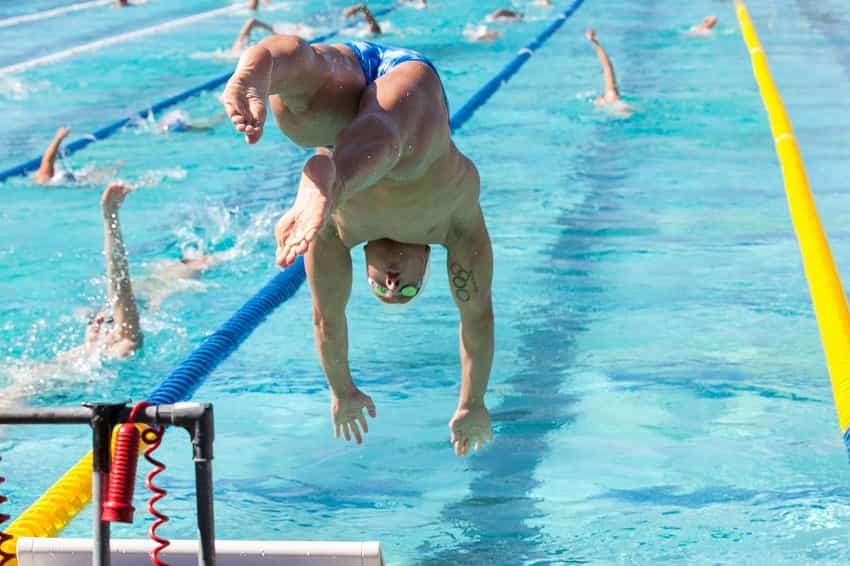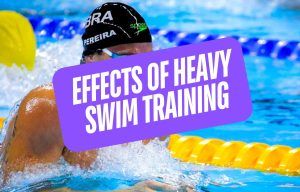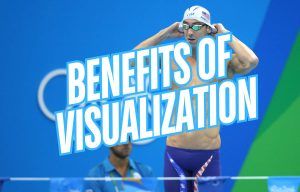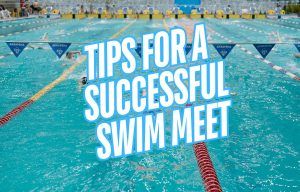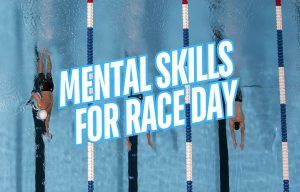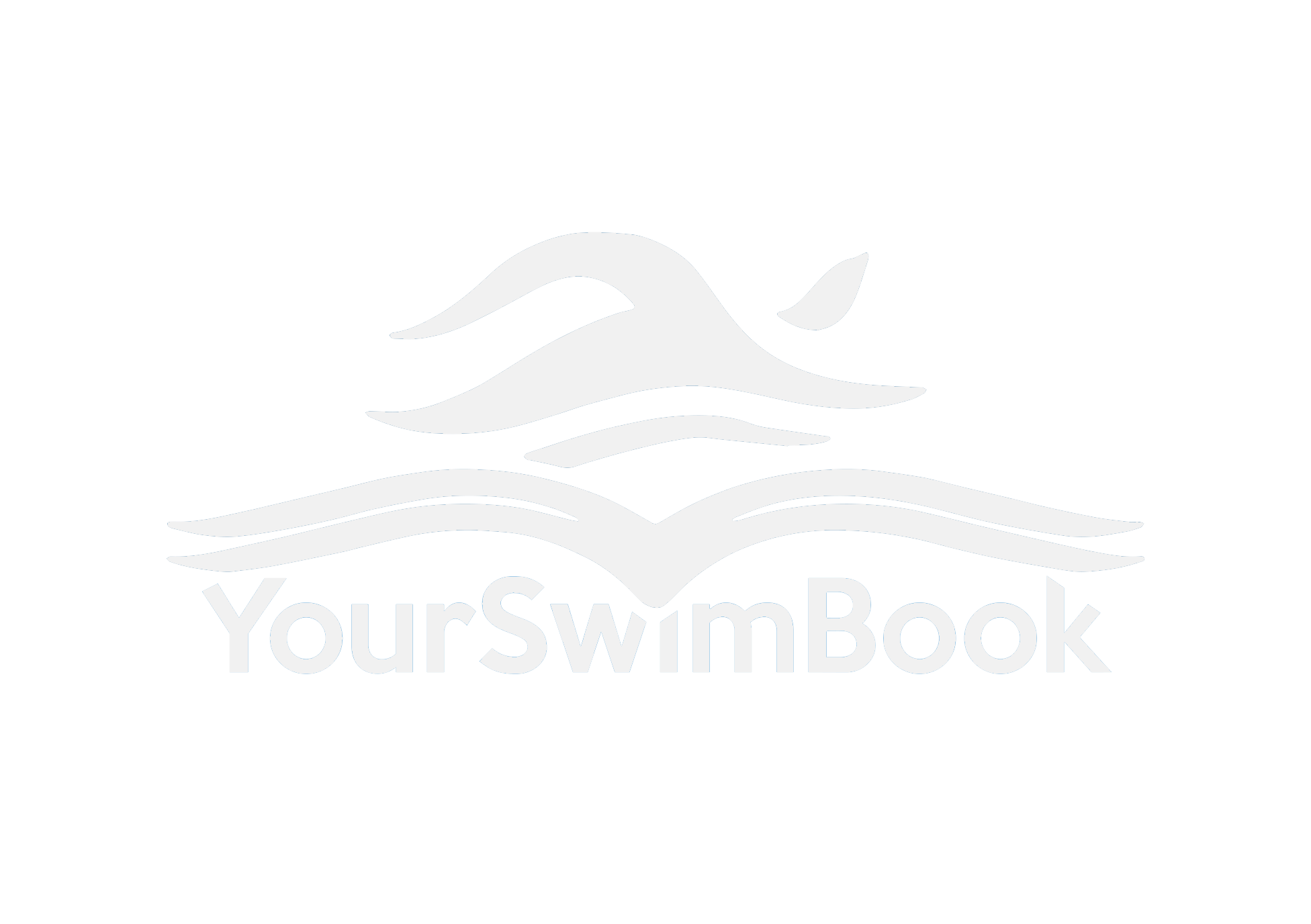Staying focused at practice can be challenging.
And for a lot of swimmers, they get a little lost when it comes to focusing properly.
Should I be focusing on how much agony I am in? Should I be focusing on my technique when swimming all-out? What should I be focused on during longer distance sets?
In this article, I am going to give you my favorite strategies for elite focus at swim practice.
The good news is that the skills you learn being focused at practice carry into being able to focus like a laser in competition.
Let’s dive right in.
1. Avoid the urge to time travel with your thoughts.
Fuzzy focus often comes from thinking about the past (“The last time I did this set I felt smoother in the water”) or the future (“If I don’t do well on this set, I’m not going to swim fast at the Big Meet”).
Time traveling with your thoughts drains your focus and energy that is better spent here and now.
You can’t change the past, and the only way you can influence the future is by land-locking your thoughts in the present.
When you catch your thoughts starting to drift, bring your focus back to what you are doing right now in the water.
2. Use the right self-talk to stay focused.
The right self-talk can help you when things get tough in practice.
Performance cues were my peanut butter and jam when it came to really challenging sets and all-out efforts.
I’d use the same handful of cues during full exertion reps to stay focused and maximize performance.
Things like:
- On the push-off and breakout: “Explode!”
- During the final 15m: “Hulk smash!”
Cues can be used during longer sets as well.
When coach writes up a set like 6×800 descend 1-6, there’s no doubt that your attention is going to attempt to make a run on you.
To stay focused, you can use a mental metronome (“1-2, 1-2, 1-2…” etc), count your strokes (you really should be doing this ALL the time, but stroke counting is a handy way to stay dialed in on your stroke), or use some self-talk to build each 100 (“Smooth acceleration!”).
Use performance cues to keep yourself dialed in on the moment.
(There are a few different ways to use self-talk in the pool. I’ve written about them in-depth: External self-talk, motivational self-talk, and instructional self-talk.)
3. Use your focus on things you control
Similar to how time traveling with our thoughts distracts us from the moment and causes us to send energy in the direction of things you don’t control, be aware of when you are focusing on things you don’t control.
If this is something you struggle with during practice and competition, sit down and write a list with two columns.
One on side, the things you control:
- I can control my effort.
- I control how I prepare.
- I control the attitude I have at the pool.
On the other side, the things you don’t control:
- I don’t control how other swimmers perform.
- I can’t control what other people think about my goals.
Being aware of the things you do and do not control is a powerful reminder to focus on the things you can improve.
4. Use a checklist for launch.
Distractions will always abound at practice and at swim meets. (Particularly the latter.)
Using a preperformance checklist can help you block out distractions and stay focused on the things that help you swim like a champ.
For swim practices, do the same activation routine each day before you hop in the water.
For race day, have a set warm-up, visualization routine, and so on.
Preperformance routines help put you on a path towards swimming awesomeness and protects you from distractions that sap your focus (and performance).
(And of course, any preperformance checklist you use should include only things you can control.)
5. Process > Outcome
If you’ve heard me say it once, you’ve heard me say it a hundred times…
Focusing on the process is your high-speed ticket to blazing times in the pool.
By focusing on the steps to executing a great performance, instead of getting lost in what other swimmers are doing, or how you feel in the water, or those pesky time travel thoughts, you methodically execute your ideal performance.
Here’s how being process-oriented at practice can look like:
- Do 15-minute dryland activation routine
- Swim my usual warm-up and get up to 140HR
- 6-8 fast efforts for water-based activation
- Give a 9.9/10 effort on the main set
- Warm down properly
This process has NOTHING about outcomes or times or results.
It’s simply a step-based process that is focused on effort.
The simplicity of it all is deceiving, but this kind of approach is perfect for swimmers who overthink swim practices.
It cuts down the chatter and allows you to focus on simple, controllable steps that you can throw all of your effort towards.
When a group of 200 collegiate athletes were surveyed1 about their best performances, the constant theme was that they focused almost exclusively on executing their best performance.
On the other hand, the times where they performed worst was when they were focused mainly on the outcome or result.
At the end of the day, and yes, I know I’m repeating myself a little bit here, swimming really, really fast (and staying focused) means taking things one step at a time.
6. Visualization before practice
Visualization is a killer tool for improving technique and reducing the crush of nerves on race day.
But it’s also a great way to improve your focus and performance at practice.
The next time you have a big practice, spend 5-10 minutes before your workout visualizing the way you want to swim on race day.
When closing your eyes, hit all of the senses:
- The way your body “floats” across the surface of the water
- The rush of water going by your ears
- The chill of the pool water when you dive in
- The otherworldly speed of being shaved and tapered
- Hitting the turns like they owe you money
- Exploding out of your breakouts
- Not panicking when a competitor sails past you
Visualization is typically used for competitions—picture the race you want to race a few times each night before you go to bed—but making it part of your pre-practice routine will help you build the performance you want.
Oh, and when you hit the water, your focus will already be programmed for success given that you’d just spent time rehearsing the swim of your dreams.
See also:
- How Swimmers Can Get Started with Visualization and Imagery
- 7 Olympic Swimmers Who Use Visualization
- How Michael Phelps Used Visualization to Stay Calm Under Pressure
7. Turn if off when you leave the pool
Swimmers invest a lot of time and mental energy in the pool.
Leave it there between practices.
Think of your focusing and concentration skills like a high-powered spotlight.
When you are at the pool, be all business with your focus.
Keep that light bright and steady.
When you are out of the water, let your focus go elsewhere.
The swimmer that can turn off their “swimming brain” when away from the pool give themselves a better opportunity to be recharged when they come back tomorrow.
The Final Lap
Elite focus at swim practice isn’t too complicated when you really think about it.
It ultimately comes down to boxing out the noise and thoughts that aren’t serving your swimming.
Try a couple of these strategies at practice this week and let me know how it goes.
Better focus and faster swimming await!
More Mental Training Guides Like This:
This Mental Training Workbook Will Help You Swim Like a Rock Star This Season. Confused about mental training? Want to unleash pro mode on your swimming this year? Learn how this mental training workbook will change your mindset and help you pummel your PB’s this season.
Mental Training Resources for Swimmers. Want even more mental training content? Here’s a full list of all of my best content on leveling up your mindset in the pool.

